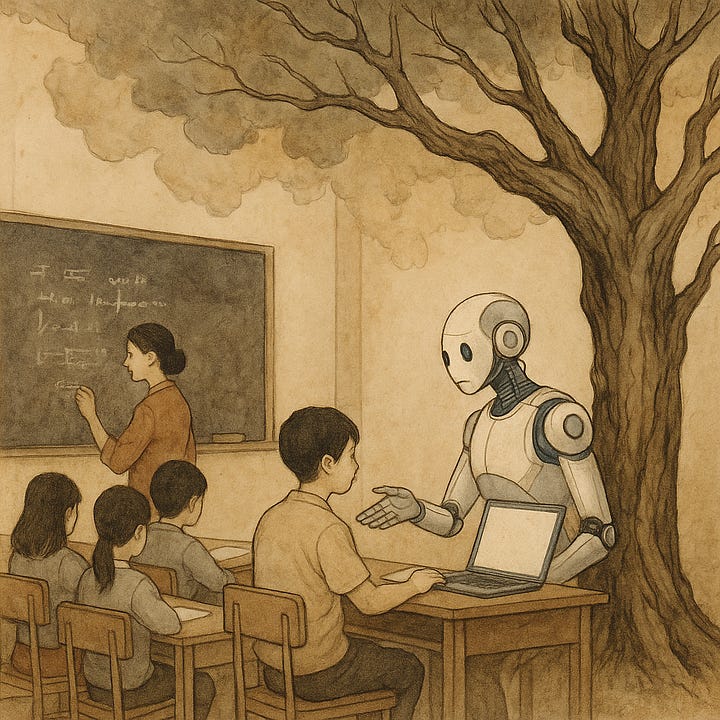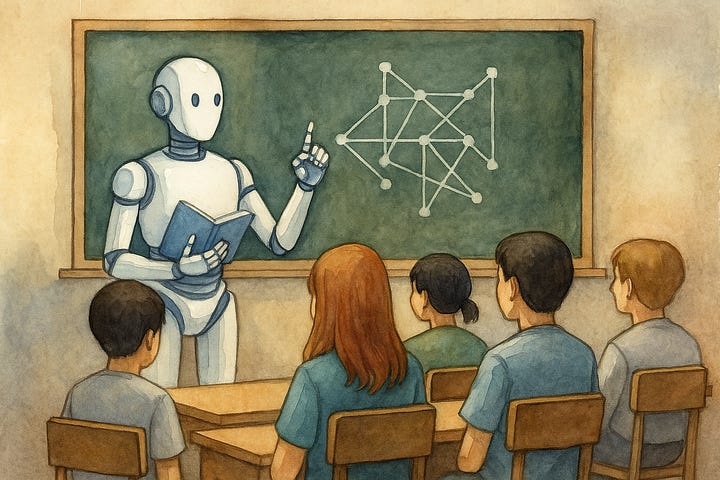Most conversations about AI in education are drenched in optimism: glowing screens, custom AI tutors humming with precision, each student guided by an algorithm that knows their learning style better than they do. It looks like progress. It feels like innovation. But what if we’re wrong? Not in some dramatic science fiction failure, but in a quiet, efficient, perfectly optimized way. What if the danger isn’t catastrophe, but erosion?
Education, at its best, is not a system for transmission; it’s a space for transformation. It’s the pause between question and answer. The awkward silence when a student realizes they don’t know. The spark when two minds disagree and wrestle toward something new. These moments are hard to measure, and harder to replicate. But they are the pulse of learning.
AI doesn’t understand that. Not yet. And maybe never.
If we design AI to optimize only outcomes, it will do just that. But outcomes and raw data are not the same as understanding. They’re not the same as wisdom, or originality, or the strange tingle you get when someone changes your mind. AI, by default, smooths the road. But learning isn’t supposed to be smooth. It’s supposed to, at times, resist you. You’re supposed to earn it. That’s what makes it yours.
In a classroom where every hesitation is answered instantly, where every essay is drafted cleanly by a machine, and every challenge is quietly sidestepped in favor of ease, what do we lose?
We lose all struggle. We lose the awkward drafts and difficult questions and long hours of turning something over in your head until it finally gives way. We lose the ‘becoming’ part of education, the part where students are not just learning facts, but shaping who they are by how they learn to think.
In this future, students may perform brilliantly, but hollowly. They may know how to prompt, how to polish, how to generate, but will they know how to grapple, how to think? How to change their minds? How to sit in ambiguity without without running away from it?
And teachers? They may be left administering AI tools rather than guiding human development. They may lose their role as mentors and provocateurs, replaced by dashboards and progress charts. The classroom becomes a performance space for machine-validated achievement. No more surprise. No more resistance. Just inputs and outputs. Clean. Fast. Deadening.
This is the great risk: not that AI will ruin education, but that it will flatten it. That we will forget the value of a once confused student. That we will trade discovery for efficiency. That we will stop asking what it means to think, and start asking only how fast we can move from point A to point B.
But human minds aren’t meant to follow straight lines; straight lines do not exist in nature. We loop. We wonder. We contradict ourselves. That chaos is not a bug in the system, it is the system.
If we want a future worth living in, we can’t design AI just to teach what’s known. We must protect the space where the unknown still lives, where the next question hasn’t been asked yet. Where the student is more than a user, and the teacher is more than a facilitator.
We must build AI that invites struggle. That sparks curiosity. That leaves room for silence, for wandering, for wildness. Otherwise, we may wake up in a world where it appears that every student learns perfectly, and no one remembers why we bothered to learn at all.
The future classroom is not just a matter of tools. It’s a matter of truth. And what we protect in that space now will echo far beyond us.





